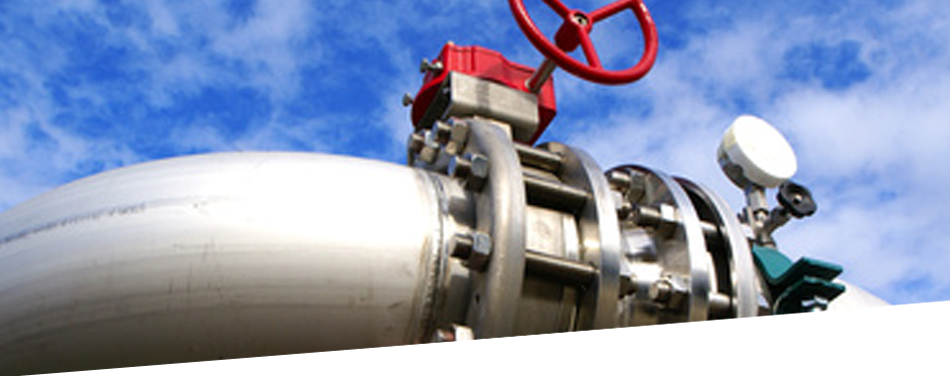Durlon® Spiral Wound Gaskets are manufactured according to ASME B16.20 standards and the Quality Assurance complies with API Specifications Q1 and ISO 9001:2015.
THE FUNCTION OF A GASKET is to create and maintain a static seal between two stationary, imperfect surfaces of a mechanical system, designed to contain a wide variety of liquids or gases. The gasket must be able to maintain this seal under all the operating conditions of the system including extremes of temperature and pressure.
The performance of the gasket is affected by a number of factors. All of these factors must be taken into consideration when selecting a gasket.
THE FLANGE LOAD: All gasket materials must have sufficient flange pressure to compress the gasket enough to insure that a tight, unbroken seal occurs. The flange pressure, or minimum seating stress, necessary to accomplish this is known as the “y” factor. This flange pressure must be applied uniformly across the entire seating area to achieve perfect sealing. However, in actual service, the distribution around the gasket is not uniform. The greatest force is exerted on the area directly surrounding the bolts. The lowest force occurs mid-way between two bolts. This factor must be taken into account by the flange designer.

THE INTERNAL PRESSURE: In service, as soon as pressure is applied to the vessel, the initial gasket compression is reduced by the internal pressure acting against the gasket (blowout pressure) and the flanges (hydrostatic end force). To account for this, an additional preload must be placed on the gasket material. An “m” or maintenance factor has been established by ASME to account for this preload. The “m” factor defines how many times the residual load (original load minus the internal pressure) must exceed the internal pressure. In this calculation, the normal pressure and the test pressure should be taken into account.
TEMPERATURE: The effects of both ambient and process temperature on the gasket material, the flanges and the bolts must be taken into account. These effects include bolt elongation, creep relaxation of the gasket material or thermal degradation. This can result in a reduction of the flange load. The higher the operating temperature, the more care needs to be taken with the gasket material selection. As the system is pressurized and heated, the joint deforms. Different coefficients of expansion between the bolts, the flanges and the pipe can result in forces which can affect the gasket. The relative stiffness of the bolted joint determines whether there is a net gain or loss in the bolt load. Generally, flexible joints lose bolt load.
FLUID: The media being sealed, usually a liquid or a gas with a gas being harder to seal than a liquid. The effect of temperature on many fluids causes them to become more aggressive. Therefore, a fluid that can be sealed at ambient temperature, may adversely affect the gasket at a higher temperature.
Both the “m” and “y” factors will vary with the type of gasket and the thickness of the gasket. Always consult with the manufacturer to determine the “m” and “y” factors for the gasket material you are using.
In any application, failure to meet the “m” or “y” factor will result in an imperfect seal and will require a change in the gasket design. This change can sometimes be made by simply decreasing the gasket surface area or by using a thicker gasket. However, since thinner gaskets are generally more effective, changing to a thicker gasket may not be the most satisfactory long-term solution. In some cases, a revision to the flange design may be required.
New gasket design factors being developed by ASME are for bolted joint designs where it is important that a desired level of tightness be achieved. “M” and “y” factors do not take fugitive emissions into account, whereas the new assumption is that all bolted joints leak to some extent. This “systems approach” focuses on all the components of the bolted joint not just the gasket. A tightness parameter (Tp), is a defined measure of tightness of a joint. A higher value for Tp, represents a lower rate of leakage. See additional discussion under Other Considerations, in the section on Gasket Selection.
